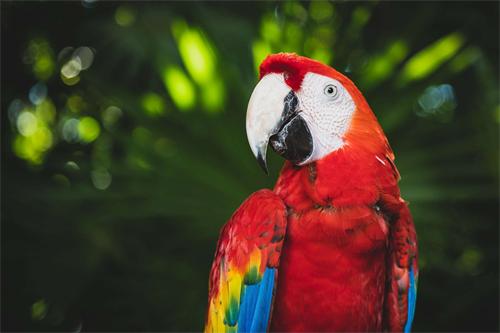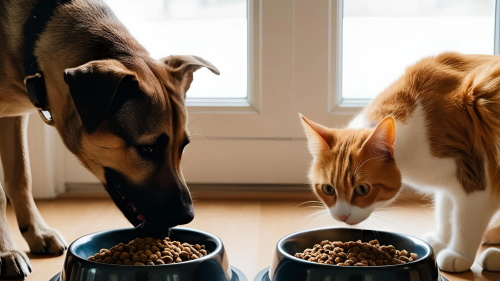Insect Protein and Lab-Grown Meat: The Future of Sustainable Pet Treats

The pet food industry has undergone significant transformation in recent years. This shift stems from growing concerns about sustainability, animal welfare, and pet health. Among the most exciting innovations reshaping the industry are insect protein and lab-grown meat. These cutting-edge ingredients are emerging as promising alternatives to traditional animal protein in pet treats, offering not only nutritional advantages but also a path to a more sustainable and ethical future for pet nutrition.
The Environmental Impact of Conventional Pet Food
The environmental footprint of conventional pet food is often underestimated. Globally, cats and dogs consume a significant amount of livestock—some estimates suggest they account for nearly 9% of the global livestock population. In countries like the United States, this figure may even rise to around 20%.
The result? Greenhouse gas emissions, deforestation, and the depletion of freshwater resources. Producing meat-based pet food is resource-intensive, and studies suggest that pet food production contributes 25% to 30% of the overall environmental impact of animal agriculture.
With the rapid growth of pet ownership worldwide, particularly in urban centers, the need for more sustainable pet nutrition methods has never been more pressing. This has prompted innovators to explore alternative protein sources that can nourish pets while significantly reducing their environmental impact.
Insect Protein: A Sustainable Alternative
One of the most promising developments in sustainable pet nutrition is insect protein. Species such as black soldier fly larvae, crickets, and mealworms have become stars in this emerging field. They provide high-quality, easily digestible protein rich in essential nutrients—making them not only sustainable but also highly nutritious for both cats and dogs.
Environmental Benefits
The environmental advantages of insect farming are significant. Compared to cattle, pigs, or poultry, insects require significantly less land, water, and feed to produce the same amount of protein. For example, black soldier flies can be raised on food waste or organic byproducts, converting the waste into high-quality protein and fat.
This circular approach helps reduce waste streams while producing sustainable feed ingredients. Furthermore, insect farming produces fewer greenhouse gases, conserves water, and can be grown vertically—even in small urban facilities.
In short, insect farming converts waste into nutrients while conserving the planet's resources—a true win-win for sustainable development.
Nutritional Overview
Insect protein is not only environmentally friendly but also nutritious. It provides a complete range of amino acids, essential fatty acids, vitamins, and minerals. These nutrients benefit everything from muscle development and immune health to coat luster and digestive function.

Furthermore, insect protein is easily digestible, making it an excellent choice for pets with food allergies or sensitivities. For example, dogs allergic to beef, chicken, or lamb can often tolerate insect protein without issue.
Insects also contain chitin, a natural fiber that promotes gut health and supports beneficial gut bacteria. This makes insect protein an ideal choice for pets with digestive issues or those who need a more balanced gut flora.
Increasing Market Adoption
Consumer interest in insect-based pet foods is rapidly growing. In North America and Europe, the insect-based pet product market has seen significant year-over-year growth, particularly among environmentally conscious pet owners. Many pet owners today are seeking foods and treats that align with their values—whether it's reducing their carbon footprint or choosing ethically sourced ingredients.
Brands incorporating insects into their formulas are driving customer loyalty, especially among pet owners who deeply care about the planet and the well-being of animals.
Lab-Grown Meat
If insect protein is revolutionizing sustainability, then lab-grown meat (also known as cultured meat or cell-based meat) is changing the ethics of pet food.
Lab-grown meat is produced by growing animal cells in a controlled environment, without raising or slaughtering animals. The result is real meat—biologically identical to traditional meat—but produced through a more efficient and humane process.
Environmental Advantages
The environmental benefits of cultured meat are astounding. Compared to traditional livestock farming, producing lab-grown meat can reduce land use by up to 95%, water consumption by 78%, and greenhouse gas emissions by up to 90%, especially when powered by renewable energy.
Unlike traditional agriculture, cultured meat does not require large tracts of land for grazing or feed production, and it does not contribute to deforestation or methane emissions from livestock. These are significant advantages for pet owners concerned about the climate crisis.
Ethical Considerations
For many pet owners, one of the biggest attractions of lab-grown meat is its ethical implications. While traditional meat production inevitably causes animal suffering, cultured meat completely eliminates this suffering. Animals are not raised on factory farms or slaughtered.
For those who embrace cruelty-free practices but recognize their carnivorous pets still need real animal protein, lab-grown meat offers a perfect compromise. It retains the natural nutritional value of meat while adhering to compassionate values.
Market Developments
Lab-grown meat for human consumption is still in its early stages, but pet consumption is progressing more rapidly. Several companies have received regulatory approval to produce and sell lab-grown chicken pet treats in select markets. This marks a historic step forward for sustainable and ethical pet food.

Although production costs remain high and large-scale distribution is still underway, these early approvals open the door to rapid innovation. As the technology matures, prices are expected to fall, making lab-grown pet food increasingly accessible to the average consumer.
The Power of Insects and Lab-Grown Protein
Perhaps the most exciting future trend in sustainable pet treats involves combining insect protein with lab-grown meat. By combining these two innovative protein sources, pet food manufacturers can create balanced, nutritious product portfolios while maximizing sustainability and palatability.
Supplemental Nutrition
Insect protein provides amino acids, fatty acids, and dietary fiber, while lab-grown meat offers high-quality animal protein with a customizable nutritional profile. Together, these two powerful ingredients create an ideal combination for pet health.
This blend is particularly suitable for pets with special dietary needs. Insects are hypoallergenic and easily digestible, while cultured meat can be genetically engineered to contain specific vitamin, mineral, or fatty acid ratios tailored to different species or life stages.
Customization Potential
Lab-grown meat technology enables scientists to engineer meat at the cellular level, adjusting its nutritional profile, texture, and flavor. This enables customized snacks or foods for puppies, senior dogs, or cats with specific health needs.
Insect ingredients can also promote gut health and provide natural prebiotics, enhancing overall digestive function. The synergistic effect of these two protein sources may redefine "premium pet food" in the near future.
The Future of Sustainable Pet Treats
Insect protein and lab-grown protein are not a passing fad; they represent the foundation of sustainable pet nutrition for the future. Over the next 10 years, we can expect to see:
l Wider regulatory approval for cultured meat for pets in Europe, North America, and Asia.
l Hybrid pet treats that combine insects, lab-grown meat, and plant-based ingredients for maximum nutritional value.
l Mainstream retail availability, with major brands launching eco-friendly product lines to appeal to climate-conscious pet owners.
l Transparency-driven brands, with pet food companies emphasizing traceable sourcing, reduced carbon footprint, and ethical standards.
l As climate change intensifies and ethical consumption becomes mainstream, these innovations will move from niche markets to everyday shelves.
The pet food industry stands at a crossroads between tradition and transformation. Insect protein and lab-grown meat offer exciting and necessary change—balancing the nutritional needs of pets with the pressing demands of environmental sustainability and animal welfare.
By embracing these innovations, we can feed our furry companions in more environmentally friendly and healthier ways that align with modern values of care and responsibility. The treats of the future may look and sound different, but they could bring the same joy to pets and a better future for the world they live in.
Recommended for you



